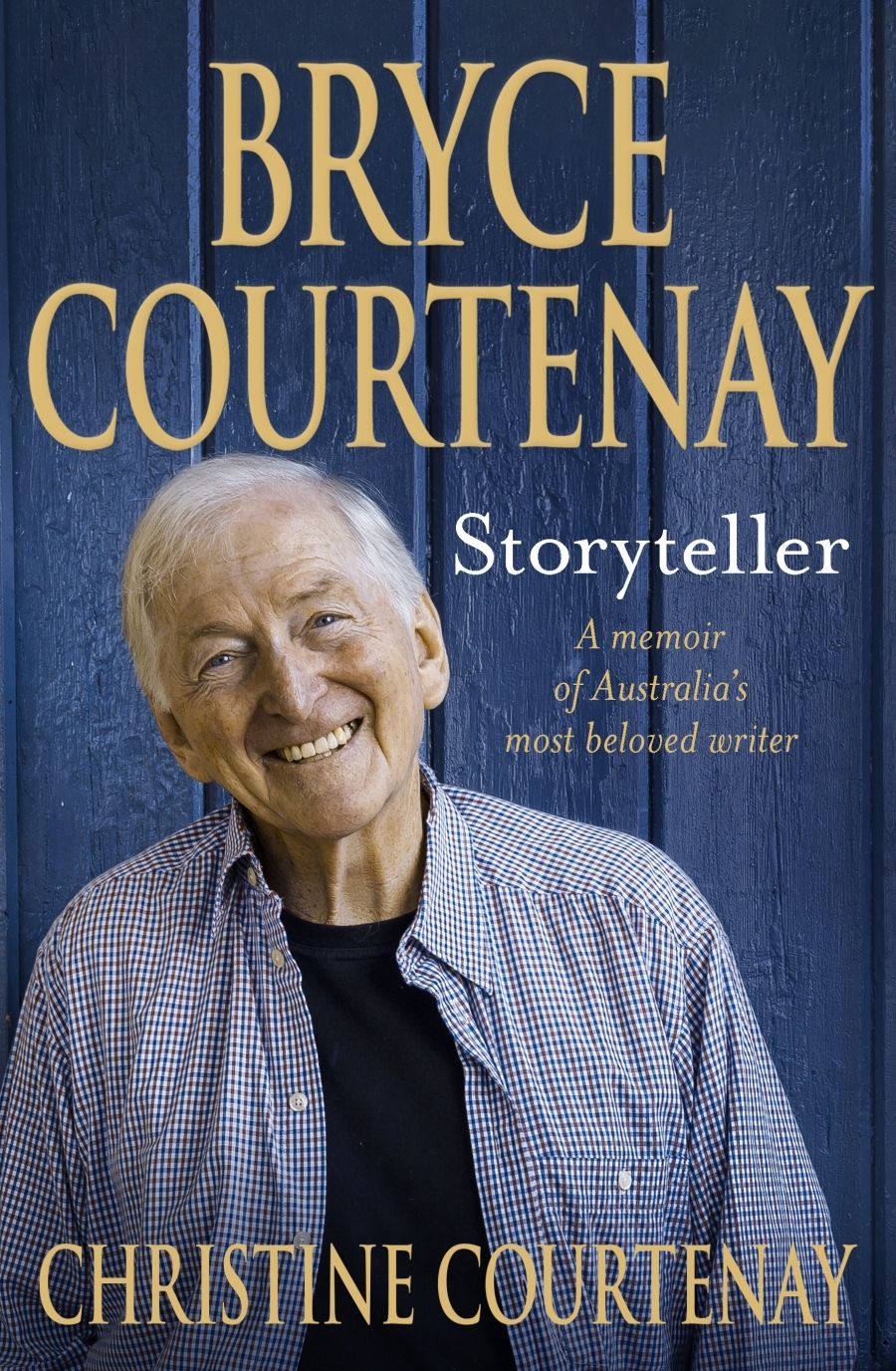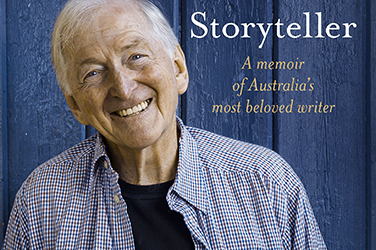
- Free Article: No
- Contents Category: Memoir
- Review Article: Yes
- Article Title: The power of Bryce
- Article Subtitle: A loving memoir of the bestselling author
- Online Only: No
- Custom Highlight Text:
In the introduction to her book about Bryce Courtenay (1933–2012), Christine Courtenay writes: ‘To be Bryce’s wife was both a joy and a privilege, and I remain proud of the contribution I made to our years together. Not long after we became a couple, he said, “I love you very deeply and we make a fantastic team, but you do realise you have taken on a full-time job looking after me? Plus, for seven months a year you’re a writer’s widow while you wait for me to finish each book.”’ It is a paragraph that reveals something about their relationship, including its power balance.
- Featured Image (400px * 250px):

- Alt Tag (Featured Image): Jacqueline Kent reviews 'Bryce Courtenay: Storyteller' by Christine Courtenay
- Book 1 Title: Bryce Courtenay
- Book 1 Subtitle: Storyteller
- Book 1 Biblio: Viking, $39.99 hb, 448 pp
While studying there, in 1955 he met Benita Solomon, and three years later they emigrated to Sydney, where they married and had three sons. Courtenay talked his way into Australia’s fledgling advertising industry, and was instantly successful. During his thirty-four years in the industry, he became creative director of three advertising agencies and renowned for such campaigns as ‘Louie the Fly’ (for Mortein insect spray) and The Milky Bar Kid.
Courtenay’s ability to connect with his audience and to sell products was an enormous asset when he embarked on a career as a writer of fiction. He started off spectacularly in 1989 with The Power of One – still his bestselling title – and from then onwards wrote one book a year, set in South Africa or in Australia, and always timed for the lucrative Christmas market. His first marriage broke down, and after a few years he married Christine Gee. Bryce Courtenay died in 2012. According to Wikipedia, he sold more than twenty million copies of his books worldwide during his lifetime.
All very straightforward, but this account has a few problems. The first part of the book contains heartrending detail about Courtenay’s miserable childhood in orphanages, abandoned by his mother while she looked for work. But the chronology is confusing: how much time did he spend there, and how often did he see his mother, his father? If he started telling stories in Afrikaans as a six-year-old, when and how did he learn English? Christine Courtenay artlessly reveals that Bryce was known as a ‘bullshit artist’ and that his children referred to ‘Dad facts’, and some of his stories do stretch credulity. Did he really think of the plots of twenty-three novels while he was recovering from a bad accident? He mentioned seeing on television the coronation of Queen Elizabeth II in 1953 in Rhodesia, but television did not come to Africa until several years later. Then there is the hyperbole. Saying Bryce Courtenay more or less invented popular writing in Australia is a bit much. What about Tom Keneally? Ruth Park? Carter Brown? E.V. Timms? Arthur Upfield? And did The Power of One really attract the largest advance paid for a first novel in Australian publishing history?
Especially in the first half of the book, I developed the suspicion that Christine Courtenay dutifully recorded everything about Bryce that he told her, without much checking. It’s hard not to be pernickety about all this, but Christine Courtenay doesn’t provide any sources for her quotes or her figures, and the book doesn’t have an index.
Christine Courtenay shows us a man who loved gardening, cared a great deal about his audience, was a champion of popular Australian writing, and worked hard to produce the books that people bought eagerly, whether they were regular readers or not. As she says, Bryce Courtenay was in many ways a complicated man, whose deprived childhood left him craving for love and acceptance: she felt sometimes, she said, that the success and admiration he had were never enough. There is poignancy, too, in the story of Bryce’s haemophiliac son Damon, who died at twenty-four of AIDS-related complications resulting from a blood transfusion.
This isn’t a properly researched biography: there are too many unchecked assertions for that. Nor is there much about Bryce Courtenay’s influences or his work as a writer (although it’s clear that because his publishers accepted everything he wrote, he was editor-proof). The author concentrates on his sales and tends to call the books ‘iconic’ or ‘brilliant’. This book isn’t a memoir, either. Given how much Christine Courtenay obviously adored the man she married, I guess it’s unrealistic to expect critical analysis, but she herself carved out a stellar career as a publicist and businesswoman in the travel industry, and she did not need to make herself merely a supporting player in her own story. This book is strictly for the fans.


Comments powered by CComment